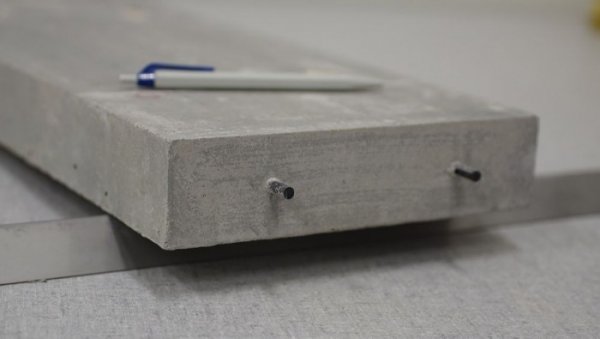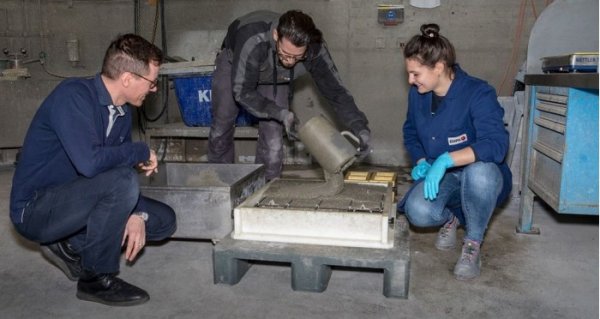One of the ways to improve the strength and durability of concrete is to add tensile steel bars before pouring, and then pull out the steel bars to compress the material when the concrete is solidified. But now scientists have found a new pre-stressing technology that makes concrete lighter without sacrificing strength and can also reduce carbon emissions.

As the most commonly used building material in the world, concrete has a huge carbon footprint, and billions of tons of concrete produced every year require a lot of energy. For this reason, scientists all over the world are seeking to adjust the production process to make it more environmentally friendly, and even small improvements may have a big impact.
At present, prestressing technology is mainly used for concrete materials that need to withstand extremely high loads (such as beams or bridges). The force generated by the tensile steel bars compresses the material from the inside. But one disadvantage of this technology is that it is easily corroded, which means that the concrete poured around them needs to have a certain thickness, and carbon fiber reinforced polymer (CFRP) is used to replace the corrosion-resistant steel bars.
However, using CFRP as a tendon involves expensive equipment, and anchoring them to both ends of the component requires a complicated process. This, coupled with their limitations, means that the use of prestressed CFRP-reinforced concrete is not as widespread as through steel bars.
The scientific research team of the Swiss Federal Laboratory for Materials Science and Technology (EMPA) has found a new breakthrough and developed a special formula for CFRP-reinforced concrete to expand when it hardens. This means that there is no need to anchor and stretch the rebar because the material will expand by itself when it hardens. The tendon will remain in this state permanently, exerting a counterforce on the concrete and generating compressive stress.
Dr. Mateusz Wyrzykowski, a member of the project, said: “If you want to prestress these CFRP reinforcement materials in order to be able to build thinner structures and higher load-bearing capacity, you will reach your limit. It’s like a person on the arm. Wrap a rubber band around and try to stretch them. The rubber band will be in tension, and a person’s arm will experience the compression of the rubber band. By analogy, this mechanism will cause the expanding concrete to experience compression.â€

This opens the door to more lean concrete components, providing tremendous strength. The team’s tests have shown that self-stressing materials can withstand loads comparable to traditional prestressed concrete, about three times higher than non-prestressed CFRP concrete components. .
"Our technology opens up completely new possibilities for lightweight construction," Wyrzykowski said. "Not only can we build a more stable structure, but we can also greatly reduce the amount of material used. We can easily prestress in several directions at the same time, for example for thin concrete slabs or prismatic curved concrete shells."
Roman Roof Tile,Plastic Resin Tile,Synthetic Roofing Tiles,Spanish Roofing Tiles
ZHENHAO BUILDING MATERIALS CO.,LTD , https://www.nbpvcroof.com